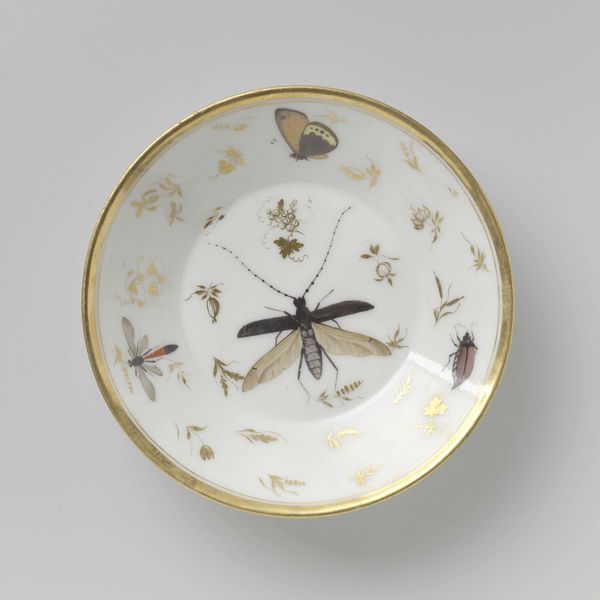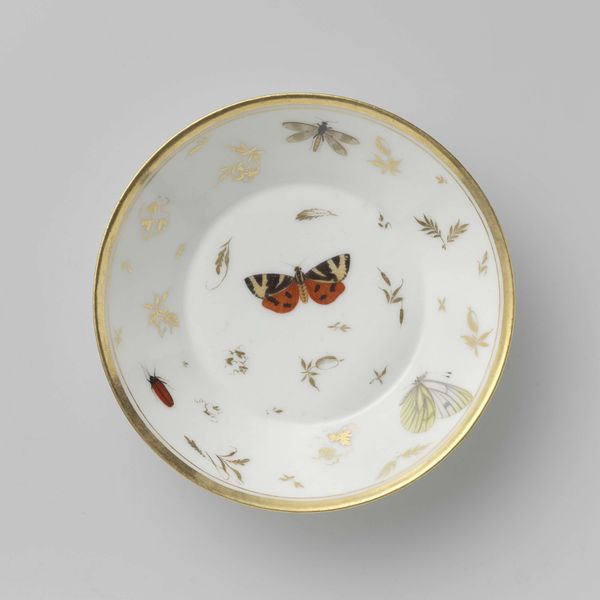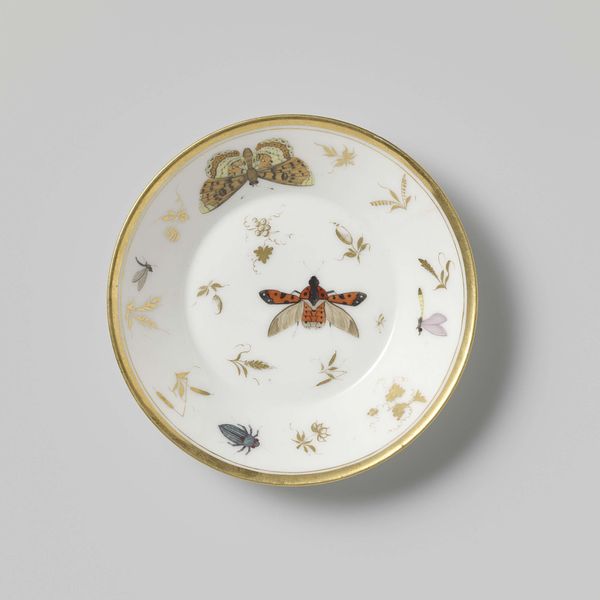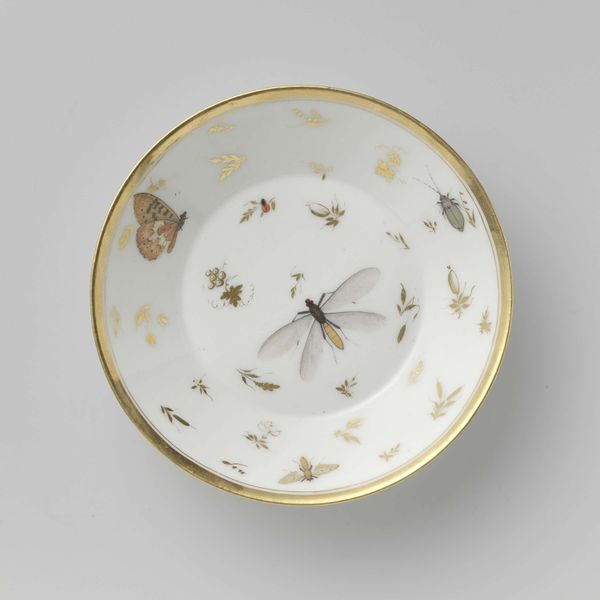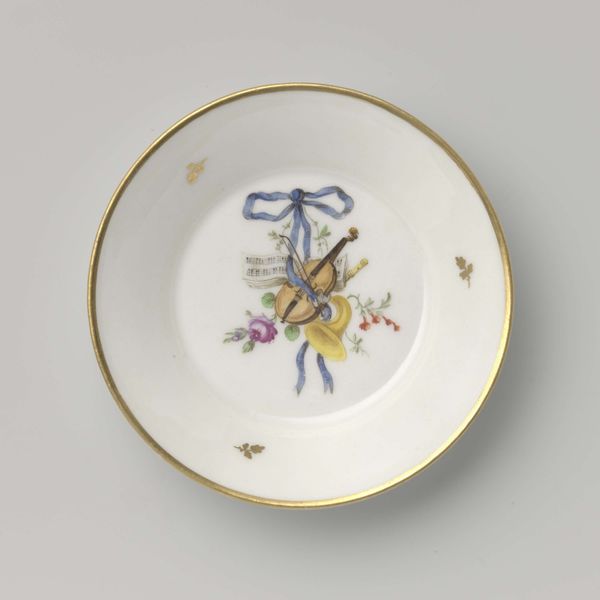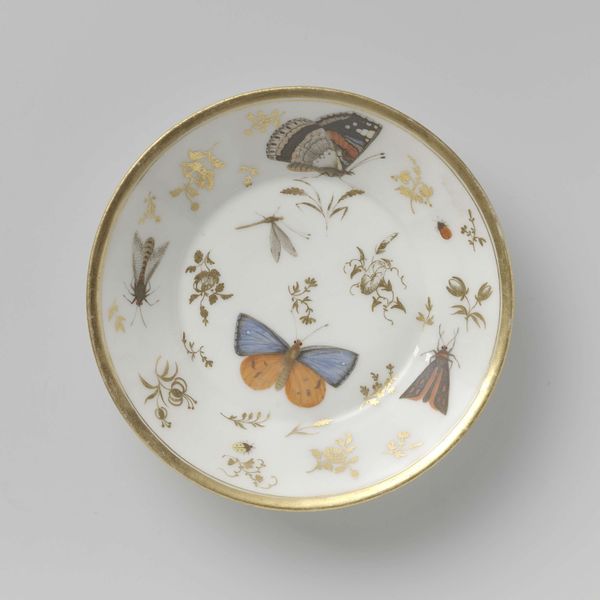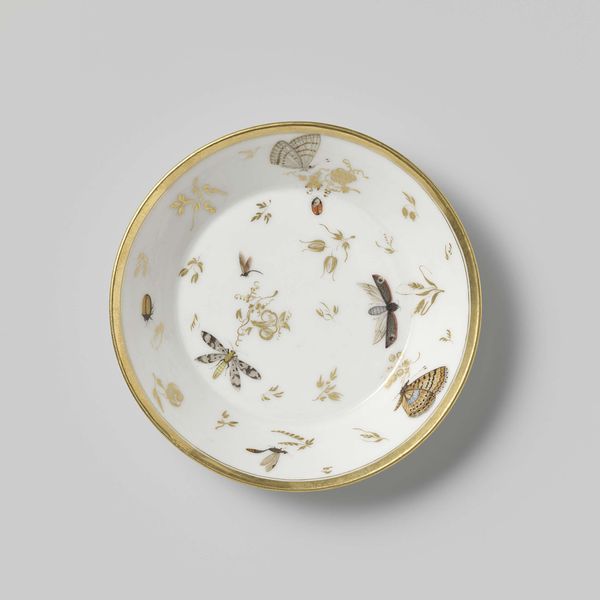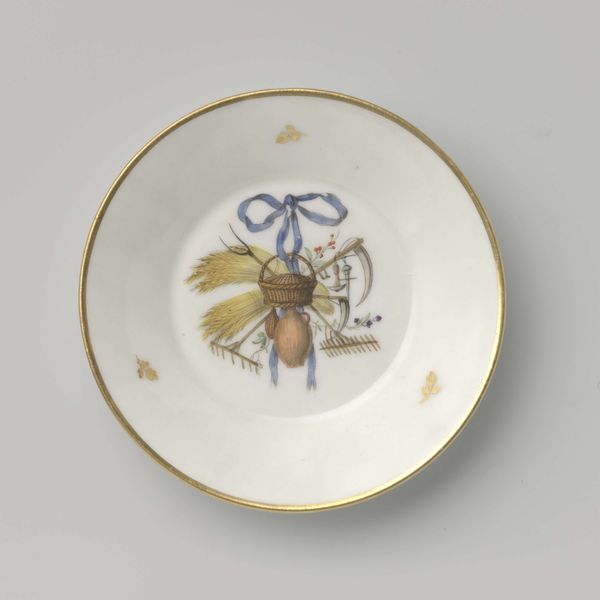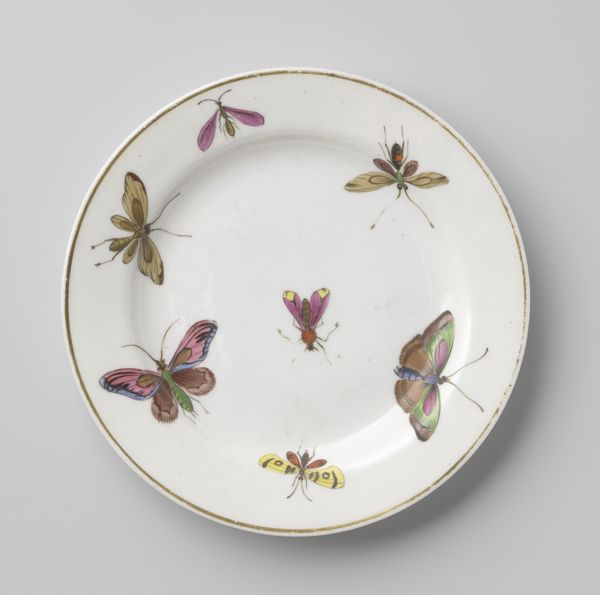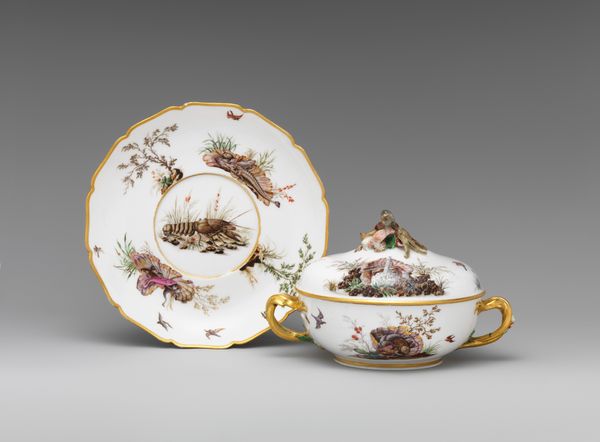
drawing, painting, ceramic, watercolor
#
drawing
#
painting
#
ceramic
#
watercolor
#
ceramic
#
watercolour illustration
Dimensions: height 2.7 cm, diameter 12.9 cm, diameter 8.4 cm
Copyright: Rijks Museum: Open Domain
Curator: This object is a saucer, made around 1797 or 1798. It’s currently held at the Rijksmuseum. It’s decorated with watercolor and drawings to depict insects, flower sprays, and grapevines, on ceramic. Editor: My first thought is, it’s an incredibly delicate presentation of something many people find unpleasant. A fly rendered with this much precision—it almost elevates the insect. Curator: The elevation comes, in part, from porcelain’s long association with luxury and refinement. This isn’t just functional tableware; the insects act almost as emblems of nature tamed. Insects often represent transformation and the fleeting nature of life. Does the fly, for instance, stand for mortality and decay, or for something more positive? Editor: Or could it represent, simply, pest control? Serving something sweet with an image designed to drive insects away—that's some high-level craft. Who made this piece? It would be interesting to know more about the studio or factory involved and their material constraints. Curator: That context would be enlightening! Rue Thiroux in Paris produced these kinds of decorative pieces. Given that it’s the late 18th century, before true industrialization, even something mass-produced retains an artisanal aspect, with much human intervention in the process. It would speak to the democratization of such luxurious items. Editor: Exactly. And look at the labor. Imagine painting all these tiny details on such a curved surface with the limited tools and raw material of that era. Even the subtle variations in the gilding around the rim tell a story about craft. How much skill does this involve and how many steps are needed? Curator: I am most struck by how the piece reflects the human desire to organize and represent nature through images—almost claiming ownership over it by portraying it within such formal, constructed parameters. Editor: I agree. Looking beyond the symbolism, the material details offer insight into 18th-century production practices and consumer desires. Both layers—symbolic and material—reveal different values attributed to it and to what, and whom, it represents.
Comments
No comments
Be the first to comment and join the conversation on the ultimate creative platform.
